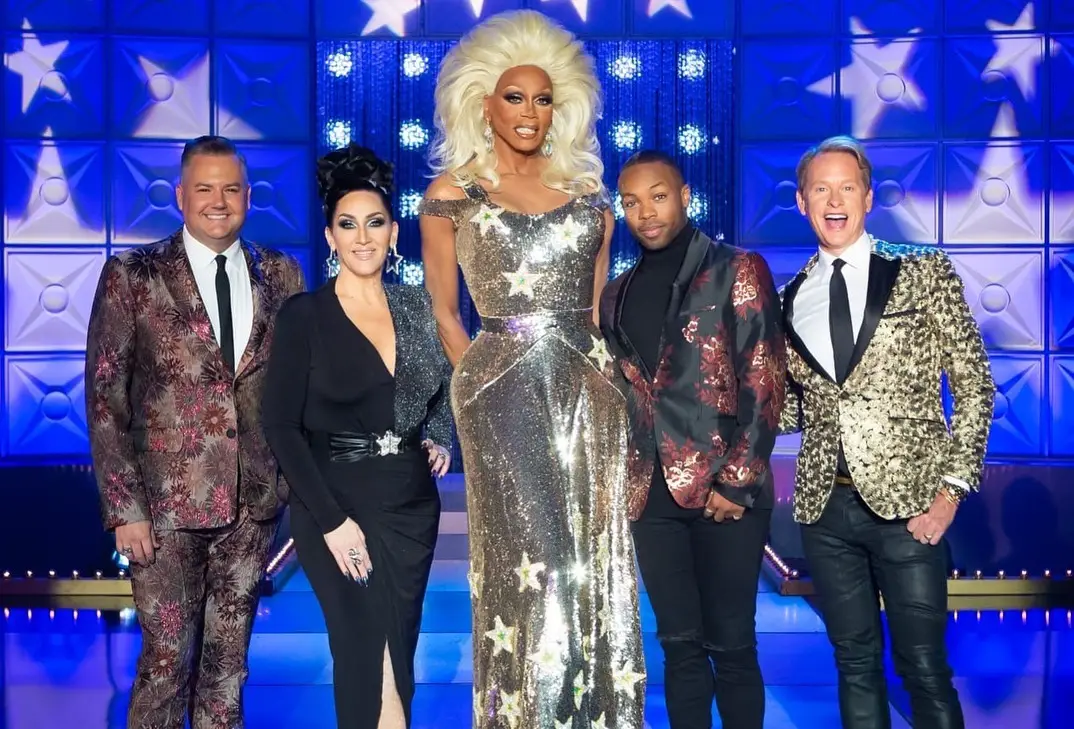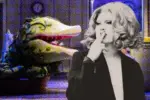Among the platitudes RuPaul often uses to promote his namesake reality-competition show, he emphasizes that “RuPaul’s Drag Race” is about the tenacity of the human spirit. The statement is in line with the brand of pop psychology RuPaul often spouts on the show, but after decades as the world’s most famous drag queen, he has a point.
“RuPaul’s Drag Race” has embedded itself as a touchstone of the modern queer zeitgeist. The show’s contestants have solidified themselves as household names to audiences who latch onto their personalities, celebrate their talents and radiate from the queens’ triumph over their often-tragic backstories. So yes, “RuPaul’s Drag Race” fans love their queens, and a big part of it is because they represent the tenacity of the human spirit.
At least this is the bedrock on which “RuPaul’s Drag Race” was built. Ten seasons and four “All Stars” iterations in, the show has discovered the trick to a level of popularity normally reserved for franchises like “Harry Potter” or “Star Trek.” It took a niche oddity and managed to strike a cultural nerve decisively enough that it’s become an entertainment industry juggernaut. “RuPaul’s Drag Race” is a show about ambition, ingenuity, visibility and, of course, the tenacity of the human spirit. But, the story of its growth has centered itself around money.
“RuPaul’s Drag Race” and its queens are the eye in a storm of economic potential.
Listing all the opportunities that have brought the queens of “Drag Race” to mainstream consciousness — or at least mainstream-adjacent — would be a substantial task. But to name a few: Fan favorites Willam and Shangela each had roles in “A Star is Born.” Season 9 runner-up Peppermint appeared in “Head Over Heels,” becoming the first openly trans actress to originate a principal role on Broadway. Kim Chi, Detox and Shea Coulee fronted a recent holiday campaign for cosmetics giant Lush.
To top it all off, there’s the biannual RuPaul’s DragCon, where fans dole out hundreds of dollars for their favorite queen’s merch, on top of already-steep admission prices, and wait hours in line to collect pricey meet and greet selfies. The most recent Los Angeles DragCon, held at the LA Convention Center, drew more than 50,000 attendees.
As the art of drag continues to seep into the mainstream, VH1, the channel that airs “RuPaul’s Drag Race,” has capitalized on increased interest in the show and the queens it showcases. By the end of 2018, VH1 will have aired three seasons of “RuPaul’s Drag Race,” with the third season of “All Stars,” Season 10 and the upcoming fourth run of “All Stars” all hitting airwaves within a single calendar year.
Spanning from the days of cinema vérité to Paris Hilton living the simple life, reality is one of TV’s great cash cows. These are shows that can be produced quickly and cheaply, and when the stars align and a program resonates with audiences, a network has struck gold, just as VH1 has done with “RuPaul’s Drag Race.”
It’s been heartening to watch the show reach its current level of success, but it’s still jarring to picture it in this context. As a yearly event, each season of “RuPaul’s Drag Race” was cause for celebration. Every “All Stars” was a milestone. Now, as the show’s frequency has increased threefold, it’s difficult to imagine the show won’t lose some of its luster. The entertainment industry tends to overexpose its brightest stars until they dim and burn out.
VH1 aired “All Stars 3” and Season 10 back to back, leading to 22 weeks of uninterrupted “Drag Race.” After only a few months off the air, the show will return for its fourth season of “All Stars,” with Season 11 expected to air soon after. With this level of output, it is entirely possible the world will suffer from “Drag Race” fatigue. But, the consequences of “Drag Race” losing its core audience, being a show that has provided unprecedented economic opportunities and made stars out of a cast of marginalized people, go further than a mere drop in ratings. A loss of interest in “Drag Race” is potentially damaging to the queer community as a whole.
With the show being produced at its new workman-like pace, “Drag Race” risks sacrificing its ability to properly elevate the stories and talents of its queens. This is a daunting prospect, as television is still in the very nascent stages of understanding how to properly represent queer people.
The magic of the show has always lied in its queer specificity. It was, and remains, one of the only shows on television to feature that many gay men, trans women and non-binary individuals, in all their vibrant complexity. A once-marginalized identity plucked from the sidelines and brought to national attention, the queens of “Drag Race” emerged as the community’s celebrities, paragons and goddesses, as personifications of queer joy uninhibited. In the very worst-case scenario, too much “Drag Race” will lead to the show losing its power to inspire.
Although, maybe its future was always meant to be massive.
Pabllo Vittar has become a major popstar in Brazil, becoming the most followed drag queen on Instagram and working with the likes of Anitta (Brazil’s answer to Beyoncé), Diplo and Charli XCX. She regularly appears on primetime television and tours throughout the southern hemisphere, performing her hits for massive crowds of adoring fans. If a drag queen can follow the path of the world’s biggest pop stars, why can’t a TV show about drag queens resemble the world’s biggest reality shows?
There will never be a dearth of talented drag performers that could be and deserve to be showcased on “RuPaul’s Drag Race.” As much as the novelty or the excitement of its format may wear thin as the show continues to be released at its current pace, the appeal of “Drag Race” has always gone beyond that of a simple reality show. As a glimpse into an experience once quarantined to dingy nightclubs or meant to be gawked at during pride parades, “Drag Race” has been a vessel into the lives of its queens for queer and non-queer audiences alike.
VH1 may be pushing out the show at a worrying speed, but as long as the queens remain at the forefront — the one factor that has and always will be indispensable to the show — the continued success of “RuPaul’s Drag Race” is all but guaranteed.
















